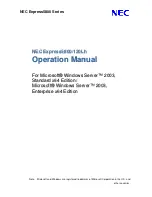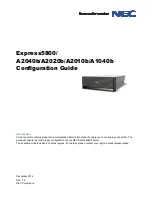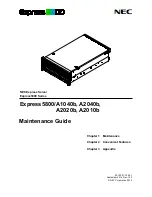
Glossary
91
FAT file system. The operating system maintains a
table to keep track of the status of various segments
of disk space used for file storage.
•
FAT32
— A derivative of the FAT file system.
FAT32 supports smaller cluster sizes than FAT, thus
providing more efficient space allocation on FAT32
drives.
FEPROM
Acronym for flash erasable programmable read-only
memory. Flash memory is a kind of nonvolatile storage
device similar to EEPROM, but the erasing is done only
in blocks or the entire chip.
firmware
Software (programs or data) that has been written onto
read-only memory (ROM). Firmware can boot and
operate a device. Each controller contains firmware
which helps provide the controller's functionality.
flash bios
A BIOS that is stored in flash memory rather than in
ROM. A flash BIOS chip can be updated in place,
whereas a ROM BIOS must be replaced with a newer
chip.
flash memory
A type of EEPROM chip that can be reprogrammed
from a utility on diskette while still installed in a
system; most EEPROM chips can only be rewritten
with special programming equipment.
format
To prepare a hard drive or diskette for storing files. An
unconditional format deletes all data stored on the
disk.
FRU
Abbreviation for field replaceable unit, which identifies
a module or component that will typically be replaced
in its entirety as part of a field service repair operation.
function commands
Commands that specify an action to be performed.
GB
Abbreviation for gigabyte(s). A gigabyte equals
1024 megabytes or 1,073,741,824 bytes.
graphics mode
A video mode that can be defined as x horizontal by y
vertical pixels by z colors.
GUI
Acronym for graphical user interface.
GUID
Abbreviation for Globally Unique Identifier, which is
a random number used in software applications. Each
generated GUID is supposed to be unique.
h
Abbreviation for hexadecimal. A base-16 numbering
system, often used in programming to identify
addresses in the system's RAM and I/O memory
addresses for devices. The sequence of decimal
numbers from 0 through 16, for example, is expressed
in hexadecimal notation as: 0, 1, 2, 3, 4, 5, 6, 7, 8, 9, A,
B, C, D, E, F, 10. In text, hexadecimal numbers are
often followed by h.
HBA
Abbreviation for host bus adapter. A PCI adapter card
that resides in the system whose only function is to
convert data commands from PCI-bus format to
storage interconnect format (examples: SCSI, Fibre
Channel) and communicate directly with hard drives,
tape drives, CD drives, or other storage devices.
HMA
Abbreviation for high memory area. The first 64 KB of
extended memory above 1 MB. A memory manager
that conforms to the XMS can make the HMA a direct
extension of conventional memory. Also see XMM.
host adapter
A host adapter implements communication between
the system's bus and the controller for a peripheral
device. (hard drive controller subsystems include
Содержание PowerEdge 7250
Страница 9: ...Introduction 7 Figure 1 1 BMC Configuration Matrix ...
Страница 37: ...BMC Management Utility 35 Figure 3 3 IPMI Help Option Example 1 ...
Страница 58: ...56 BMC Management Utility w w w d e l l c o m s u p p o r t d e l l c o m ...
Страница 64: ...62 BMC Management Utility Error Codes w w w d e l l c o m s u p p o r t d e l l c o m ...
Страница 70: ...68 Using Console Redirection w w w d e l l c o m s u p p o r t d e l l c o m ...










































